Active Listening Tecniques:
Rogers and Farson defined three ways of active listening
• Find the real meaning of what you hear. Try to understand both the words and the emotions behind them.
• Respond to feelings, not to what the other person “says”. Often the real message is the emotion and not the words that make up the message. In these cases, forget about the text and respond to the emotion.
• Do more than listening. Much of the communication is non-verbal, so be vigilant.
Here are some of the active listening techniques that the FBI teaches its special agents. You don’t have to master them all to be an excellent listener, using 3 or 4 will be more than enough. But as soon as you do, you will discover all the benefits that active listening can offer about you and the other person.
1. The first thing to do is to stop judging
Perhaps the most difficult is the most necessary: listen without judging the other person or drawing conclusions. Remember that when someone speaks they are using language to express the thoughts and emotions they feel inside and that they do not have to be totally precise with the words.
If the other person says something that shocks you, acknowledge that he has surprised you but do not call it stupid or crazy. The moment you think or act like a judge, you lose your usefulness as a listener. It is precisely for this reason that from the project we have the rule of not making value judgments, because we never really know who the person we are talking to is.
2. Resist the urge to give advice.
This is especially important in men since our attitude is usually very focused on conflict resolution.
Most of us when we speak we are not seeking for advice. Advices is always based on a context that most of the times is not the same as ours. Also,we never know the other person reality so we better avoid giving advice.In addition, there are people who take advice very seriously and can take it to the letter.
Most of us prefer to find our own solutions and we just need someone to listen to us and help us discover them. If, anyway, you think you have an absolutely great idea to share, the most advisable thing is to ask your interlocutor’s permission: “Would you like to hear my opinions about it?”
3. Interrupt only when absolutely necessary
Another pretty difficult exercise: In most conversations people constantly interrupt each other (or yell at each other, see talk shows). When we inteerupt anyone, that is what we are telling them:
• What I have to say is more important than what you have to say.
• This is not a conversation, this is an argument and I want to win it.
• I don’t feel like hearing the details of your opinion.
When you practice active listening, let the person you are talking to be the one to guide the conversation to where he or she wishes.
Avoid asking questions or suggestions that could interrupt and lead to other topics, such as “Maybe you should also consider …” or “This reminds me of when …”
You may think yo do not do that but is really hard to avoid such comments
4. Redirect the conversation when necessary
Many times it is inevitable that conversations will lead elsewhere.
Let’s take this example:
someone is telling you about his experience volunteering in Nepal and tells you that there he met a friend of yours in common, the most normal thing is that you ask him how your friend is doing.
Without wanting to, you will have gone from talking about his life experience as a volunteer to talking about the life of your friend, which can lead you to leave behind what your interlocutor really wanted to tell you.
When a question leads in a direction that has nothing to do with what your interlocutor wanted to tell you, it is your responsibility as an active listener to redirect the conversation back to its source: “I’m glad you met Alex, but tell me more about your adventures in Nepal ”.
5. Repeat what you just heard
A very simple way to show that you are listening and thus make the other person more motivated to keep talking is to repeat what they have said from time to time, regardless of whether you agree or not.
It’s an old and familiar trick, but really effective. You don’t have to repeat everything literally, but repeating the last few words can be very helpful. Another version is to repeat his last idea again using your same vocabulary.
I use it time to time to make sure I am understanding everything. Not everyone has a good ability to explain themselves and everytime I write any of the stories I find talking to someone in the chair I realize how many details I have missed!
By using this trick you are showing the other person that you are listening what he or she is saying. You can also dare to draw conclusions to confirm some aspect that you want to clarify: “So you were an hour late for the appointment. Was it that you were very nervous? ”
6. Reflect their feelings so that they open up emotionally
In a conversation you can share information, data and opinions. But you can also share and reflect feelings. Feelings are more difficult to guess but they are very important because feelings create a greater bond with the person who has sat down by showing empathy and involvement, precisely this detail will make them remember you and be back to sit down again.
Do not limit yourself to just repeating literally what you just heard: you should try to interpret it in terms of the emotions that the other person may be feeling. The way to do it is simple. It is about adding an emotion to what you have just been told: “So you feel sad / happy / angry / etc when such a thing happened?” It will also help you to later write the story.
If you are wrong when trying to guess how he or she feels, don’t worry, the fact you are wrong will help the other person to open up emotionally because they will do everything possible to make you feel how he or she feels.
7. Ask for more information with the appropriate questions
Asking questions from time to time is another way to show that you are attentive and interested in what the person you are talking to is telling you. However, it is convenient to be clear about what types of questions are useful and which ones can be negative.
Open questions:
They are useful to get the other person to keep talking and help to de-stress. They will also provide you with more information about your interlocutor’s point of view. They usually start with What, When, Where, How or Who.
In the Free Conversations Movement, We use these questions a lot to start a conversation or when we are faced with a person who is very reserved.
Closed questions
Closed questions is useful to confirm specific aspects that you want to clarify. The answer is “single-worded”, it could be something like “so you feel excited about your new opportunity?” “so you are disappointed with your boyfriend, right?”
8. Ask about the consequences of what he just told you
This is the most powerful technique of all for getting people to solve their problems on their own. And at the same time the simplest.
It consists of asking questions that, although they seem redundant, allow you and your interlocutor to delve into his feelings: you just have to ask what he thinks would happen if what he just said happened.
You can also go further and ask what happened the last time he went through a similar situation: “What happened the last time you stopped taking the medicine that the doctor prescribed?”
In this way, you will be making her travel the same path that led her to make that decision. You will most likely be self-assertive and reassured.
9. Help him clarify his thoughts and feelings
When your interlocutor pauses, you can take the opportunity to try to clarify their thoughts with open questions about their emotions (“What exactly is it that worries you about your current situation at work?”) Instead of asking closed questions.
You can also reflect what you think he just told you to clarify, deny or confirm what you have understood (“Would you prefer this job where you will never be able to travel?”). This will motivate him to develop his point of view further and help him better explore his beliefs and opinions.
Remember that the true meaning of personal conversations is not usually in what is is said, but in the emotion. Therefore, the key is to respond to the emotions of your interlocutor (“Does it hurt that he did not call you on your birthday?”) And not to the textual content (“So, how long has he not called you?”).
10. Use positive reinforcement and open body language
Although it sounds cliché, a very simple way to show that you are paying attention is to use reinforcement words such as clear, ah, yes, I understand, and all the ones you use regularly.
Body language is also important. Show your attention by facing your entire torso (and feet, do not forget them) towards your interlocutor, maintain an open posture (avoid crossing arms and legs) and even encourage him to continue talking with gestures of expectation such as raising his eyebrows.
It has also been shown that reflecting body posture and facial expressions serves to generate more empathy in emotional situations, as long as it is done with discretion. In fact, if you are really listening, you are most likely doing it unconsciously.
11. Respect the silences
In several investigations it has been seen that the main difference between the best hostage negotiators and the other ones is that the most effective ones listen much more than they speak, and they also respect silences.
Logically one of the keys to active listening is listening, but you must also feel comfortable with silences. Silences give people time to think and find the most precise words, so don’t deny them that right.
On the other hand, silence is especially useful in tense situations because it helps calm tension, and that is essential for someone to stop acting emotionally and start behaving more rationally.
12. Avoid typical mistakes
It is also convenient to avoid certain errors that can be an obstacle to communication and an emotional disconnection with your interlocutor:
• Minimize the significance of what they are saying to you with cliches like “Don’t worry about it” or “You give too much importance to it.” Let him speak and when he is in a less emotional state you can argue why he is not so important to you.
• Trying too hard to force the other person to talk about something they prefer not to discuss.
• Maintain a condescending and compassionate attitude, with phrases like “Oh, poor thing … I know how you must feel.”
• Finish sentences for the other person when the other person has trouble finding the words or pauses. Don’t assume she means what you think she is going to say. It also gives the feeling that you are in a hurry to finish speaking.
• If your interlocutor gets very emotional, accept it without criticism or without saying things like “Please don’t cry.” You probably don’t want me to cry for him, but so you don’t feel worse yourself. Let him express his emotions and just give him affection to comfort him.
13. Finally, summarize the conclusions of the conversation
A good way to formalize everything that was spoken, relax the situation and create a greater commitment is to summarize the conversation including the elements and emotions that your interlocutor considered most important.
A practical example
– After yesterday’s conversation with the tutor, I think I’m going to study aeronautics instead of sociology.
– Aeronautics instead of sociology? (you paraphrase to start showing interest) Why this change of mind? (you ask for more information with an open question)
– Because he told me that he has many more professional opportunities and that he sees me more designing airplanes than trying to understand society …
– But nevertheless you think you are going to regret it and you are insecure, right? (you reflect their emotions of uncertainty)
– It’s possible. I have always wanted to study sociology but maybe my tutor is right and it is wrong.
– What do you think will happen if he decides not to study sociology? (you make him think about the consequences of his decision)
– I am not sure … I suppose that I will always have the remorse of not having studied what I was really passionate about, even if I find a more well-paid job in another field.
(You make a silence because he has just opened up with his emotions and you want him to identify them) – Would you then like to live with the feeling of not having tried to study what you wanted? (you clarify their thoughts and feelings).
– Well I guess not …
– What has happened up to now when you have been making the decisions that you thought appropriate without asking anyone for advice? (You ask him to express out loud what happened the last time he went through something similar).
– The truth is that nothing. So far I have been doing more or less well doing what I wanted to do and not what I was supposed to do.
– Can you give me an example? (you ask him to deepen).
– Yes, I decided to join the basketball team even though everyone said I was too short and now I really enjoy playing base.
– So it seems that deep down you are clear that you are going to study whatever you want, right? (You reaffirm him in his decision and summarize the conclusions).
– Yes I think you are right.
Logically this is an ideal example, but the idea is that you are aware of what happens when you use active listening. At no time do you judge your interlocutor, her decision or her guardian. You just guide her through the decision process that she should make herself sooner or later.
By making her walk the path that she should naturally take to make a decision is when she realizes that her choice is the right one and is reaffirmed. Much more than if you tried to convince her with advice based on your experiences.





